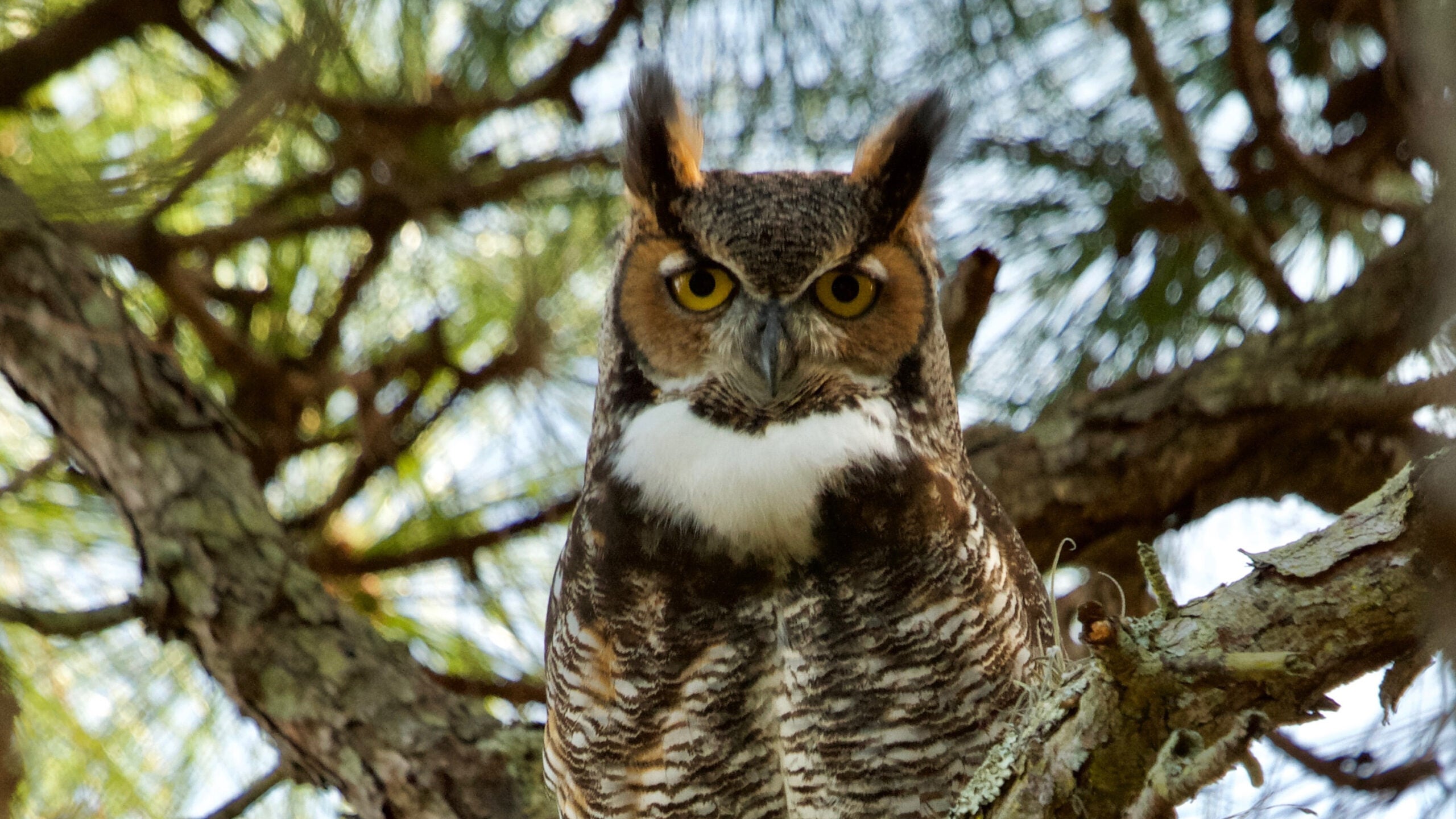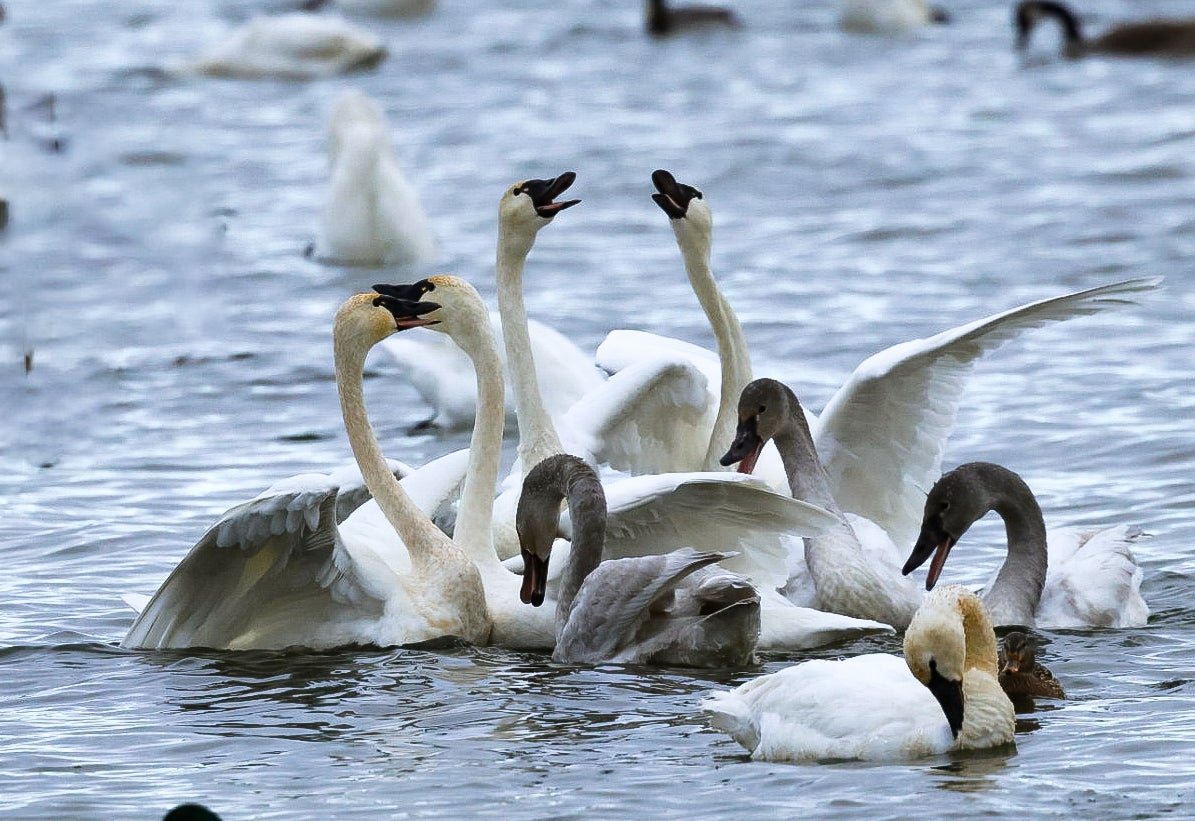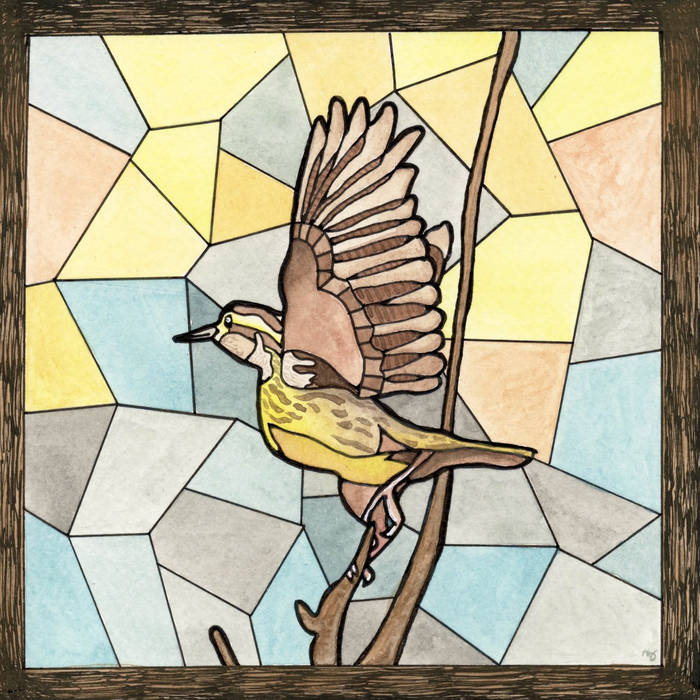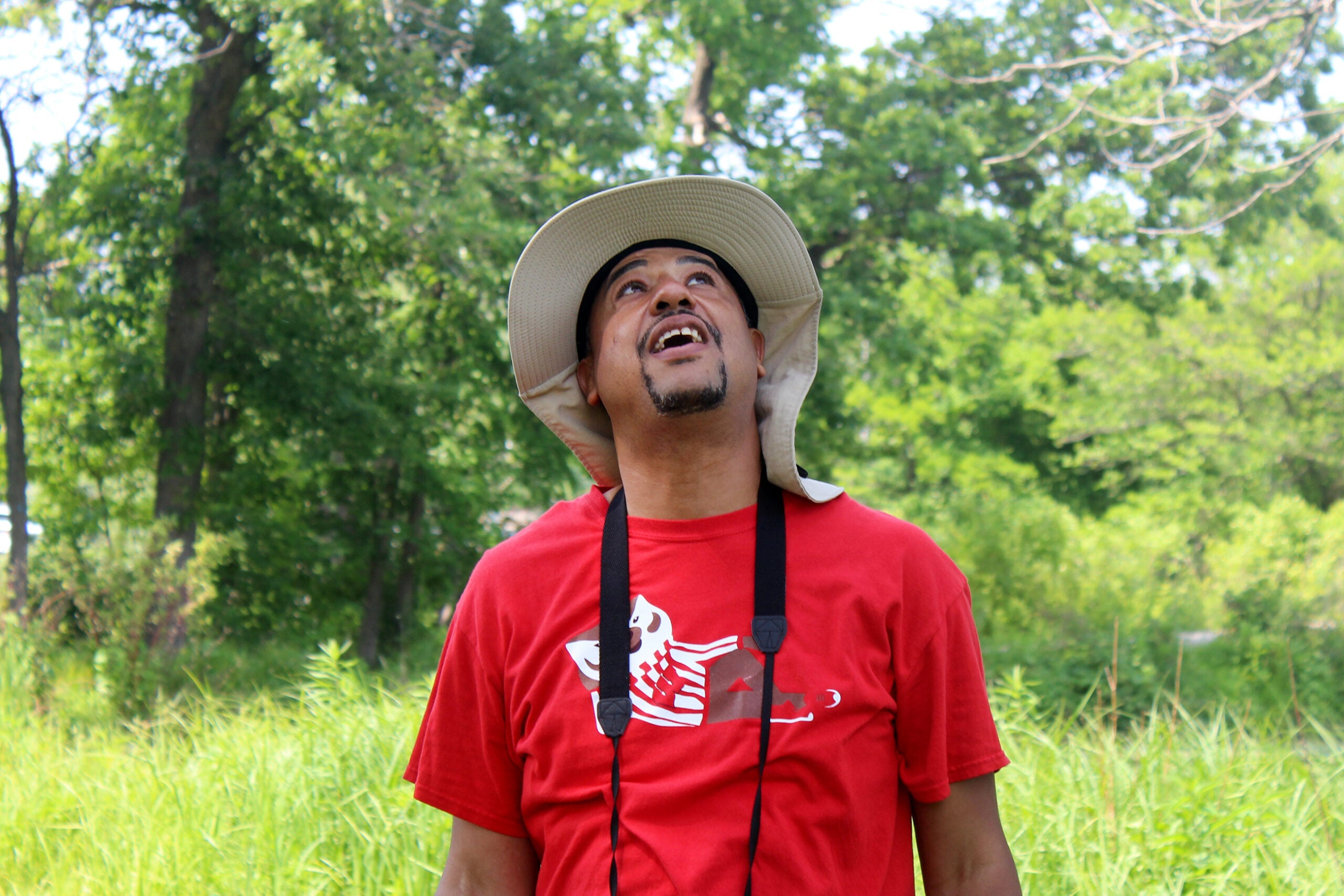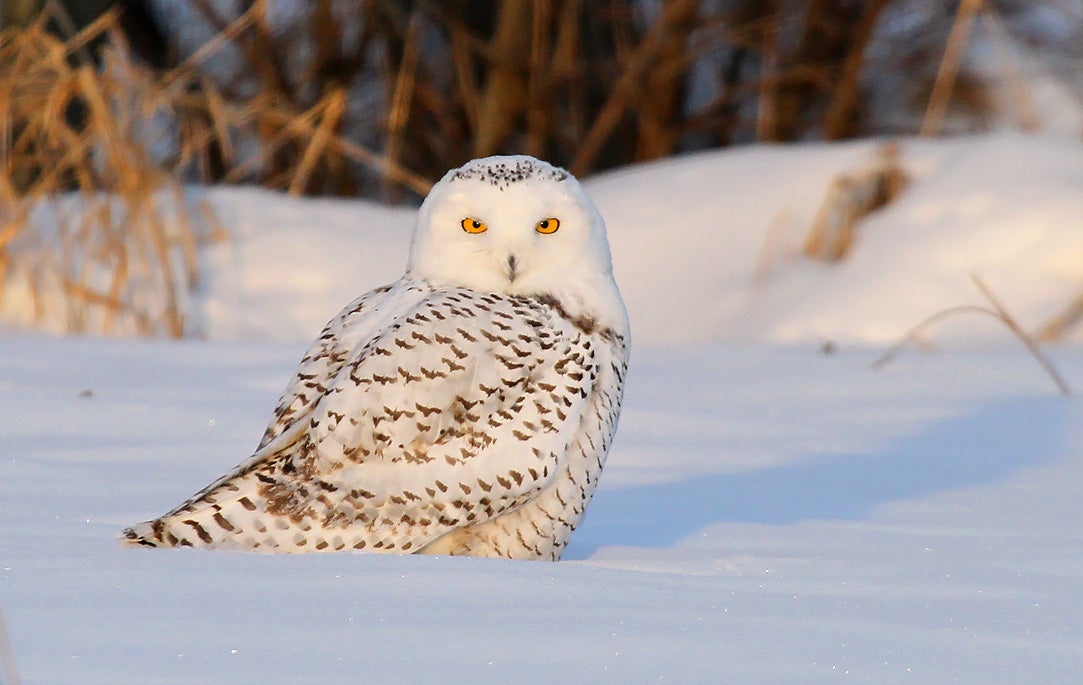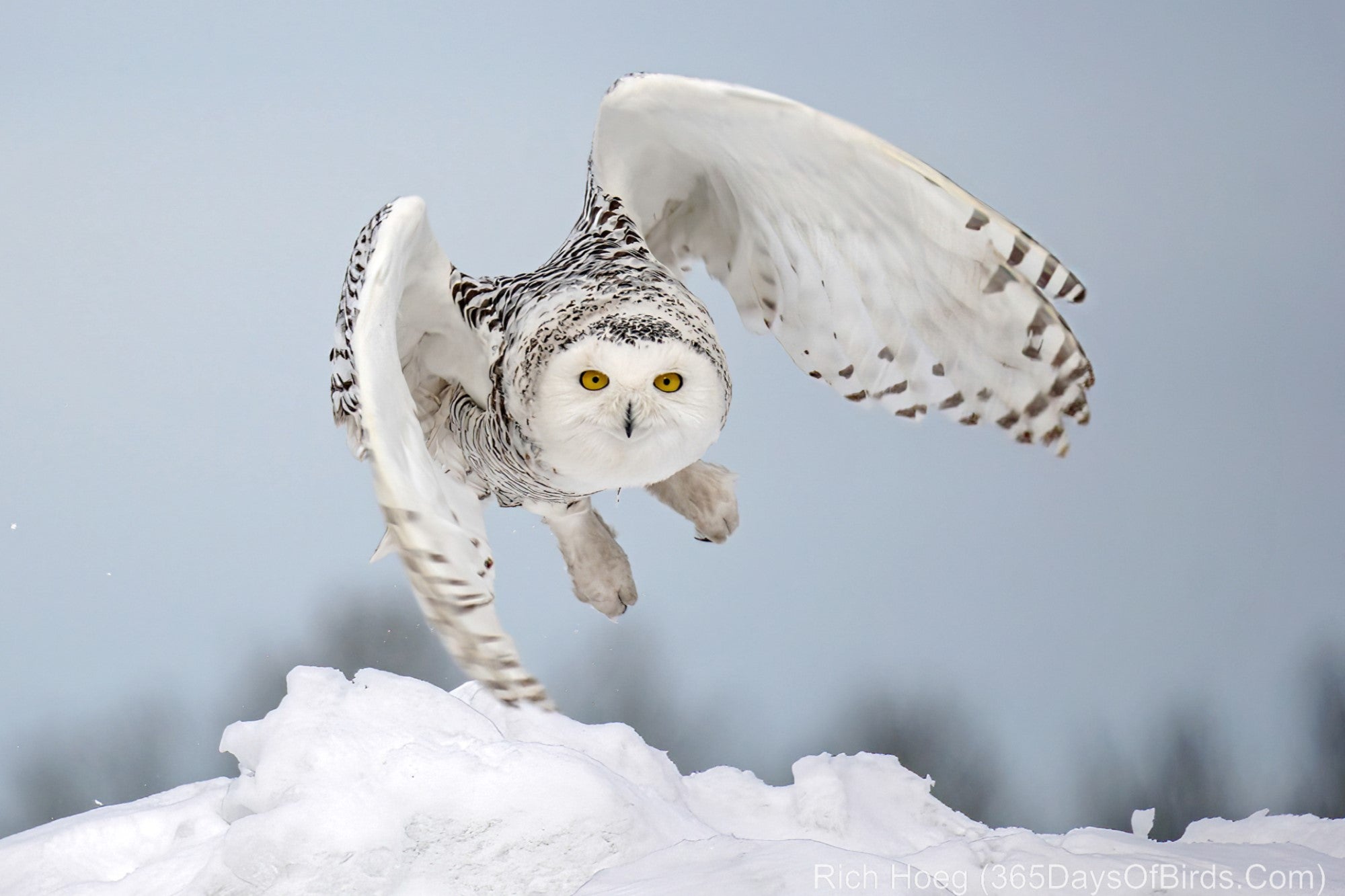Why have people throughout time felt connected with owls, above all birds? Is it their sense of all-knowing wisdom? Or maybe that they are the only birds with two front-facing eyes.
Jennifer Ackerman writes in her new book “What an Owl Knows: The New Science of the World’s Most Enigmatic Birds” about how owls are cryptic, hard to find and difficult to understand. Speaking with “To the Best Of Our Knowledge,” she said that’s part of the attraction.
This transcript has been edited for clarity and length
News with a little more humanity
WPR’s “Wisconsin Today” newsletter keeps you connected to the state you love without feeling overwhelmed. No paywall. No agenda. No corporate filter.
Shannon Henry Kleiber: Jennifer, there are so many people interested in birds, and you have written about all kinds of birds. But there’s something especially obsessive and fascinating about owls. I want to understand why that is.
Jennifer Ackerman: They’re utterly unlike other birds. There’s something very familiar about them. We see ourselves in them. Most birds don’t have forward-facing eyes the way that owls do. So they look like us.
And at the same time, we see this suggestion of a whole other way of being. Most owls are night creatures. They move about unseen. They really reveal themselves only with their kind of weird hoots and cries. It’s spooky how they appear out of the dark without advance notice. Living things aren’t supposed to appear and disappear this way. But owls break the rules, and I think we kind of put them in a supernatural category for that reason.
So I think it’s this combination of things, the familiar and the strange that makes these birds really so powerful.
SHK: Our interest in owls spans wide time periods and geographies, continents and generations. Owls are known as messengers, and carry symbolic meaning. What are some of the enduring myths and legends of owls?
JA: I spoke with one ethno-ornithologist who studies the relationship between birds and people, and she surveyed how all different kinds of birds show up as symbols in the beliefs and stories of hundreds of different cultures. And it was owls that popped to the top. They hold symbolic value for people all over the world. Crows are very common in myths and symbols, and sometimes jays, but owls top them all.
Some cultures consider them symbols of good luck and prosperity, like the Greeks. Athena was the goddess of wisdom and she had an owl with her. And the ancient Greek coin is called the owl. It has an owl image on one side and Athena on the other. And other cultures view them as emblems of evil, of bad omens and death.
SHK: And we know owls have captivated artists — from the prehistoric Chauvet Cave paintings in France, to Picasso, who was known for painting and sculpting little owls. Why are owls such a muse to artists?
JA: They’re a powerful symbolic presence. Picasso found this little injured owl, called a little owl, a European species, and he kept it and took it with him back to Paris and then used this owl as a kind of muse, although it was a very cranky owl. Owls make terrible, terrible pets.
SHK: And that’s some of the irony, right? They seem so sweet and wise, but they’re not really great house pets, after all.
JA: No, they’re terrible pets, for lots of reasons. They’re very messy. They eat raw meat. You have to feed them fresh mice. But the bigger point is that they’re wild creatures and they really need to be in a wild environment.
But I think Picasso saw in this little owl his own visage. And he used it in very interesting ways in some of his etchings and prints that the owl is in a corner, often looking out at some scene of debauchery or humans really misbehaving. And this little owl is kind of a witness to those human acts of misbehavior.
SHK: When did your own personal interest in owls start?
JA: Many years ago, I put up an owl roosting box on the maple tree behind my house. We have a kitchen window that looks right out on this maple tree. I put it right there next to the kitchen window. And I’ll be darned if an Eastern screech owl didn’t take to that box and roost. It would just roost during the day with this little head in this circle of the box.
I always sat there waiting for the moment that it left the box to go hunting. I could never catch it leaving or coming back, but what would happen in the morning is that there would be some piece of an animal, a bird, or some piece of prey hanging part way out of the box. One time, it was a morning dove and this wing was hanging out of a hole in the box and you would see it sort of twitch, twitch and then be yanked inside. The prey would disappear and the owl was clearly eating it inside.
I just became absolutely fascinated with owls at that point. I didn’t return to them until many years later. But that was the beginning of it.
SHK: I love your story about Julie, the woman who works in the emergency department of a hospital during the day, but volunteers with an owl research group at night and says it helps her with compassion fatigue. And she says, “I could really use an owl right now.” I loved that phrase. How does researching owls help her? How do we — as a society — need an owl right now?
JA: Julie deals with a lot of trauma and death in her work at the ER, and she told me there’s something so vibrantly alive and exciting about owls. She was just drawn to this weird mix — they’re just as cute as can be. She works mostly banding Northern saw-whet owls. They are about the cutest owls on the planet. They look like what a baby owls should look like. They’re just adorable. And yet, they have these talons. They’re really fierce hunters and they’re just so enchanting, so alive that they really take her completely out of herself, out of her difficult world in the hospital and put her into the woods at night in the world of these owls.
I think there’s something deeply comforting about watching animals going about their lives. We have so many personal problems. We have so many world problems. And you see these creatures really dealing with tremendous challenges, but carrying on with their lives and courting in wonderful, weird ways, mating and then raising their young against all odds. I’ve always found it just so transporting and inspiring and comforting.
SHK: I’d like to talk about owl sounds. Their songs, their hoots, their calls. What do you call the way owls communicate?
JA: They’re (called) vocalizations and they range tremendously. Some of them are hoots, some of them are squawks. They also chitter. They have a wide range of vocalizations. And the new science on what those vocalizations are communicating and the kind of information they contain is just absolutely fascinating.
SHK: Tell me more, because I was reading your book about the sounds and thinking it reminded me of baby cries. When your babies cry, this kind of cry, you should recognize it (and what it means). So what are they saying when they’re making these sounds?
JA: We’re just beginning to figure that out. The call that most people are familiar with in owls is the hoot. Big owls hoot and little owls toot. That’s the catchphrase. These are usually territorial calls, their ways of marking their boundaries in their territory. And also, sometimes, they’re ways to draw a mate.
The Northern saw-whet owl is a very, very vocal little bird when it’s looking for a mate. One scientist, David Johnson, actually counted the number of toots that this little bird made when it was trying to draw in a mate — it reached 160 per minute.
Hoots are very individual to the bird. Every owl has a signature hoot, kind of like a fingerprint, and that allows them to identify their neighbors, their mates, their allies, and also allows us to identify individual owls in the wild.
That’s useful for two purposes: actually counting them in terms of population and also understanding their social lives. When you know that you can actually identify individuals, you know who’s mating with whom and how they might be switching up partners. So it’s given us a real window on their social lives.
SHK: What does it sound like? Can you do an owl sound?
JA: I can do a great horned owl. I’m not great, but here we go.
So it has a little stutter on that second syllable. But they vary tremendously. So that’s the sort of basic structure. But they have different tones. They have different rhythms. Some of them have this sort of sexy vibrato that they use.
The talent of imitating owl calls is really something that some people are so good at that they will draw in actual wild owls when they hoot like them, because the owls come in to check out who’s in the neighborhood.
SHK: Wow. I can imagine for someone who’s really interested in owls, communicating with them would be a great aspiration. So if someone wanted to communicate with owls, learning those hoots would be a way to do that?
JA: Yes. And a woman named Karla Bloem, who’s the director of the International Owl Center, has worked very hard to try to understand great horned owls because she had a captive owl, a great horned owl, named Alice. She was trying to train Alice to be an ambassador bird and to educate people about owls. But she didn’t understand what Alice was saying. Karla couldn’t couldn’t understand the hooting language. And this great horned owl would get very annoyed with Karla and sort of bat her over the head with her beak — until Karla learned to hoot properly. And she eventually did. And so she has some little bouts of communication with this bird now, which is just an extraordinary thing, I think.
SHK: So as familiar as owls seem, they are also scientifically complicated and hard to know. What’s going on with the latest science of understanding owls and are we starting to learn more about them?
JA: Absolutely. I think the study of owls has really changed a lot over the past decade or so, and it’s been partly due to breakthroughs in technology. There are, for instance, nest cams that have really revolutionized the study of owls because they give scientists this 24/7 intimate look at owl interactions at the nest that otherwise would be just impossible to observe.
We’ve also got some new eyes in the field, like infrared cameras, radio tagging, even drones that they’re using to explore areas of Siberia. Also satellite telemetry that’s illuminating the movements of owls, both over short and long distances. They can put these tiny satellite transmitters on to the backs of snowy owls. And that’s revealing some really wonderful new insights into their very mysterious movements.
SHK: What did you learn about yourself while spending time with owls?
JA: This was a fascinating project to work on, and it did take me out of my comfort zone. I’m a lark by nature, not an owl. I’m a morning person and owls are night creatures. So I had to get used to staying up late, going out in the woods at night. It was really an amazing experience to just also be in the woods at night and to hear what owls hear — it was very, very exciting and sometimes a little scary.
They certainly have something to teach us about some of our technologies and how we might use their interesting biomechanics, their wing design, their feather design to make all kinds of things that are quieter, like airplanes and wind turbines and bullet trains. Engineers are using owls as models for designing technology that will reduce the noise of some of the machines around us.
I think owls have taught me something about moving through the world with more quiet and making a virtue of invisibility in a funny way. They’re so beautifully quiet and their camouflage is so amazing. I’ve thought a lot about what loud, sort of boisterous, noisy creatures we are. And I think owls have something to teach us about their way of being in the world.

